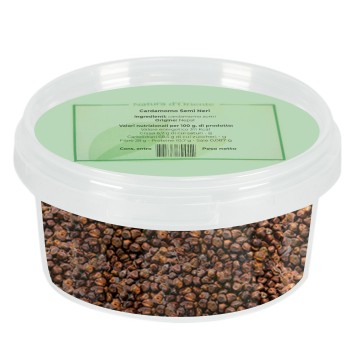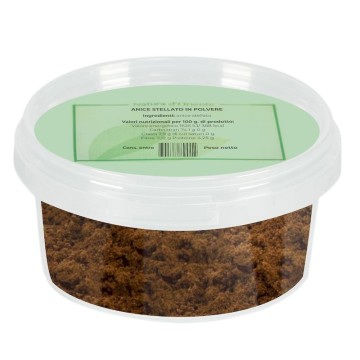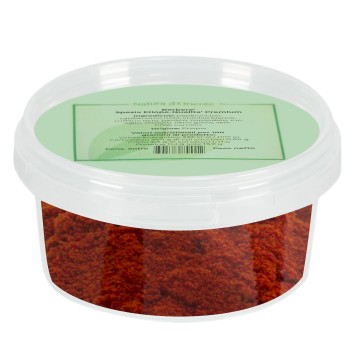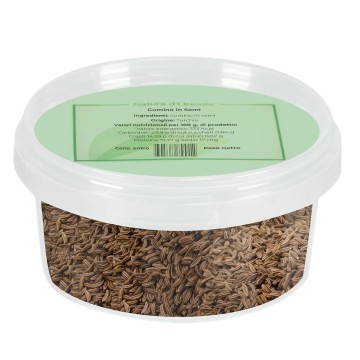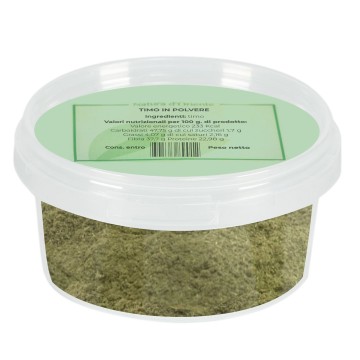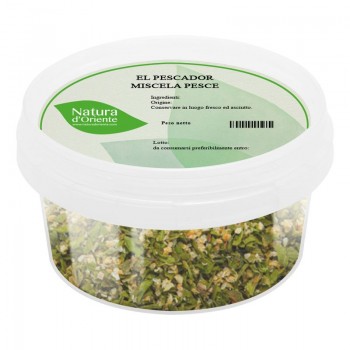Ground chili pepper: properties and benefits:
Chili pepper, regardless of the variety used, has been shown to have sensational benefits for the body and can be used, as we will see shortly, to treat numerous ailments of the body.
Considered by popular medicine as one of the most versatile natural remedies known to man, chili pepper also pairs well with almost any dish: from spreadable creams to chocolate. So whether it is sweet, slightly spicy or very spicy, it is in any case a tasty spice with unexpected therapeutic power. Chili pepper has antibacterial properties, thanks to the presence of flavonoids and capsaicinoids, which allow excellent preservation of food even at high temperatures.
In addition to having digestive and antioxidant properties, it is rich in vitamin C, present in greater quantities than citrus fruits. Other vitamins and mineral salts present in chili pepper are: vitamin A, E, PP, potassium, calcium and phosphorus.
Origins and historical notes:
Chili pepper comes from far away and has a very ancient history. From Montezuma to Columbus, chili pepper is an important element in all pre-Columbian civilizations where we find it as a protagonist in all pre-Columbian civilizations. Among the Aztecs, the Maya and the Incas it is a plant considered sacred and also used as a currency of exchange.
In all these millennia, chili pepper has been used as a sacred fruit, as a medicine, as an aphrodisiac, as an instrument of magic and torture and as a great flavoring. Combined with beans, but also with chocolate. In Europe chili pepper arrived with Christopher Columbus who met him during his first voyage. On the second voyage in 1494, Columbus's collaborators, led by the ship's doctor Diego Alvarez Chanca, began cultivation and brought the chili pepper to the Spanish Royals. Sixty years later it spread throughout Spain.
From here it spread throughout the old continent and also to Italy. Christopher Columbus, his collaborators and the Spanish Royals were convinced they had got their hands on a big business. However, the chili pepper betrayed all expectations of easy profits. There was no business for three reasons. Because it was not appreciated by the rich and nobles, who did not appreciate its spicy flavor.
Because the ease of cultivation of the plant, which also takes root in a pot, eliminated the need for travel and trade with the land of origin. And finally the negative judgment of the Church that branded it as "instigator of insane intentions". Axi was the name by which the chili pepper was called by the natives known by Columbus. In Europe it was then called Indian pepper, horned pepper, siliquastro. However, starting from the seventeenth century the name was characterized autonomously.
In the 18th century, the scientific name Capsicum was established. The term chili pepper is very recent, appearing for the first time at the end of 1800 as a diminutive of pepper. For the gastronomic affirmation of chili pepper at the highest levels of Italian and European society we have to wait until the beginning of the twentieth century. In those years chili pepper was widespread only among the less well-off working classes, the farmers of the south who used it to flavor their humble dishes, thus earning the nickname "poor man's spice".
With the poor cuisine it was love at first sight. Chili pepper gave flavor to foods that didn't have any, preserved meat when there were no refrigerators, with its disinfectant properties it was of help to the populations of hot countries. Thus, in a short time it spread among poor populations with monotonous diets and lacking in vitamins. With chili pepper, Mexicans flavored tortillas, Africans cassava, Asians, southern regions and especially Calabria have livened up their poor and vegetarian cuisine.
With their imagination they have created authentic "gastronomic jewels". Today chili pepper is widespread throughout the world and after sea salt it is the most used food. In Europe the nation that consumes it the most is Hungary where a powder made with a sweet variety called Paprika prevails.
Followed by France and Spain where there are the only chili peppers with the European quality mark with the European quality mark: Espelette chili pepper in France and Pimiento del piquillo in Spain.
In Italy chili pepper is widely used in the southern regions and especially in Calabria. It is used fairly well in Greece, especially in Macedonia. In England, spicy condiments such as Curry and Chutney are loved.
Use in cooking: spaghetti with garlic, oil andchili pepper ingredients: 360 gr of spaghetti 3 cloves of garlic 2 chili peppers 100 ml of olive oil parsley salt.
PREPARATION: Remove the green inner core of the garlic, then roughly chop the garlic, parsley and chili pepper and put them in a pan with plenty of oil. Brown over medium high heat and fry in a pan with oil. In the meantime, cook the pasta in a large pot of well-salted water. Drain the spaghetti halfway through cooking (keeping the cooking water aside) and add them to the pan. Add a couple of ladles of cooking water and finish cooking in the pan, stirring often and reducing everything well.pasta in a panThe spaghetti with garlic and oil are ready, plate and serve immediately.





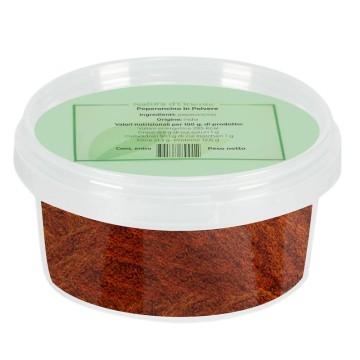



 No reward points for this product.
No reward points for this product.
